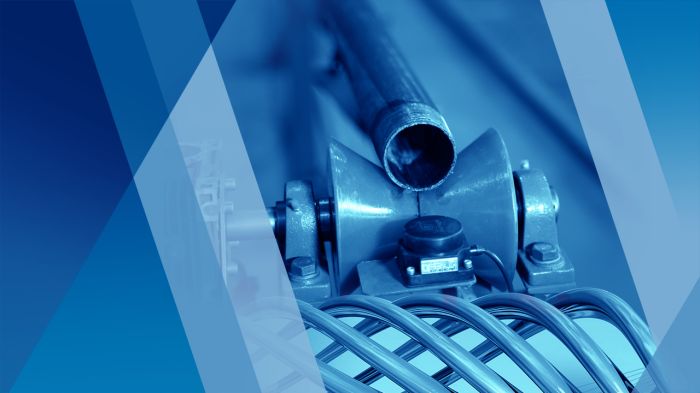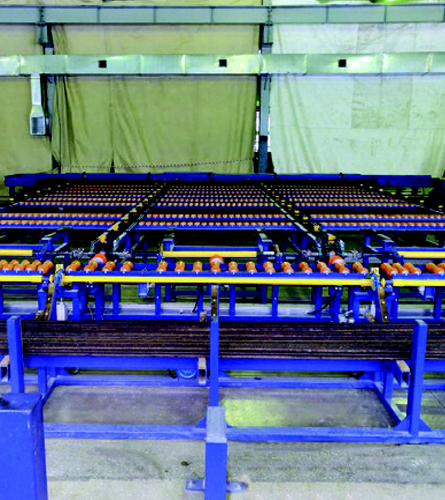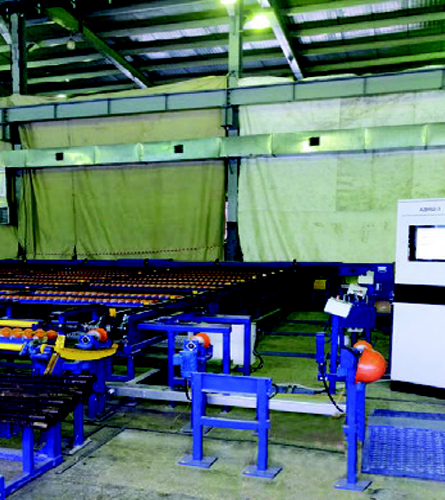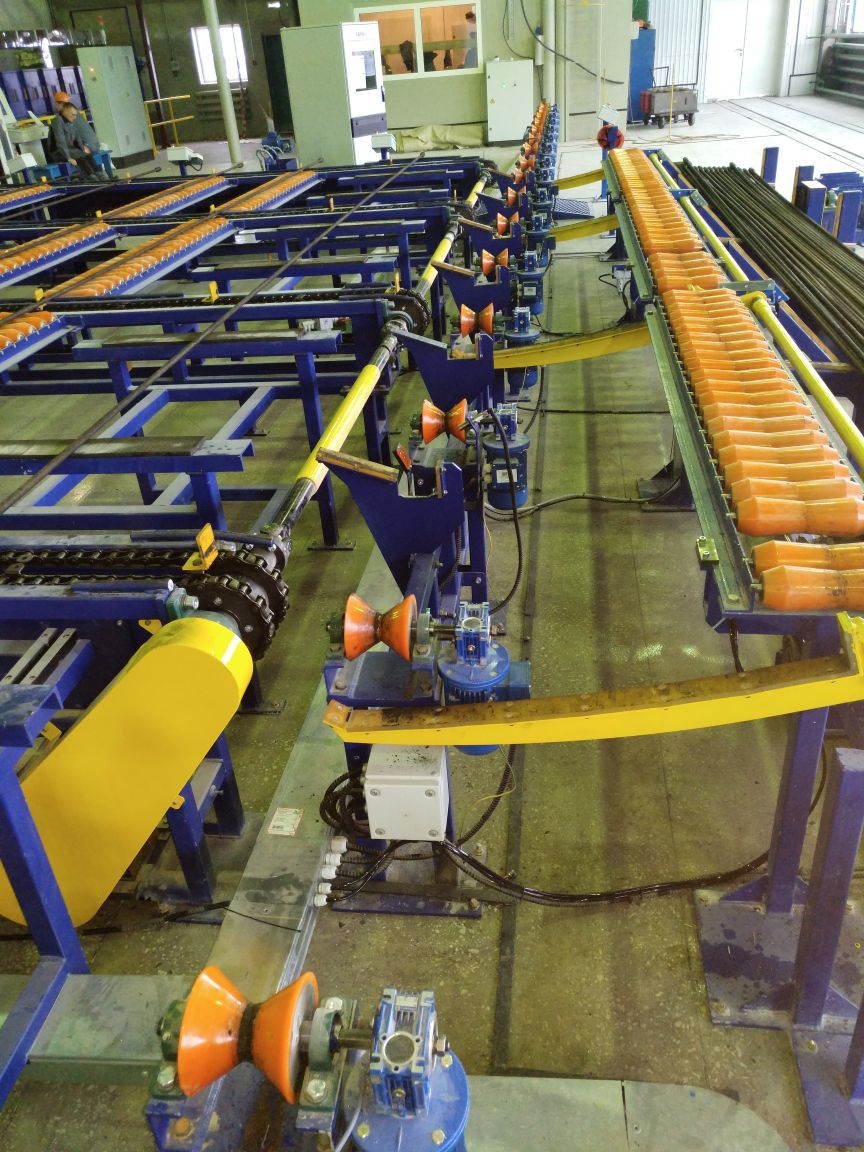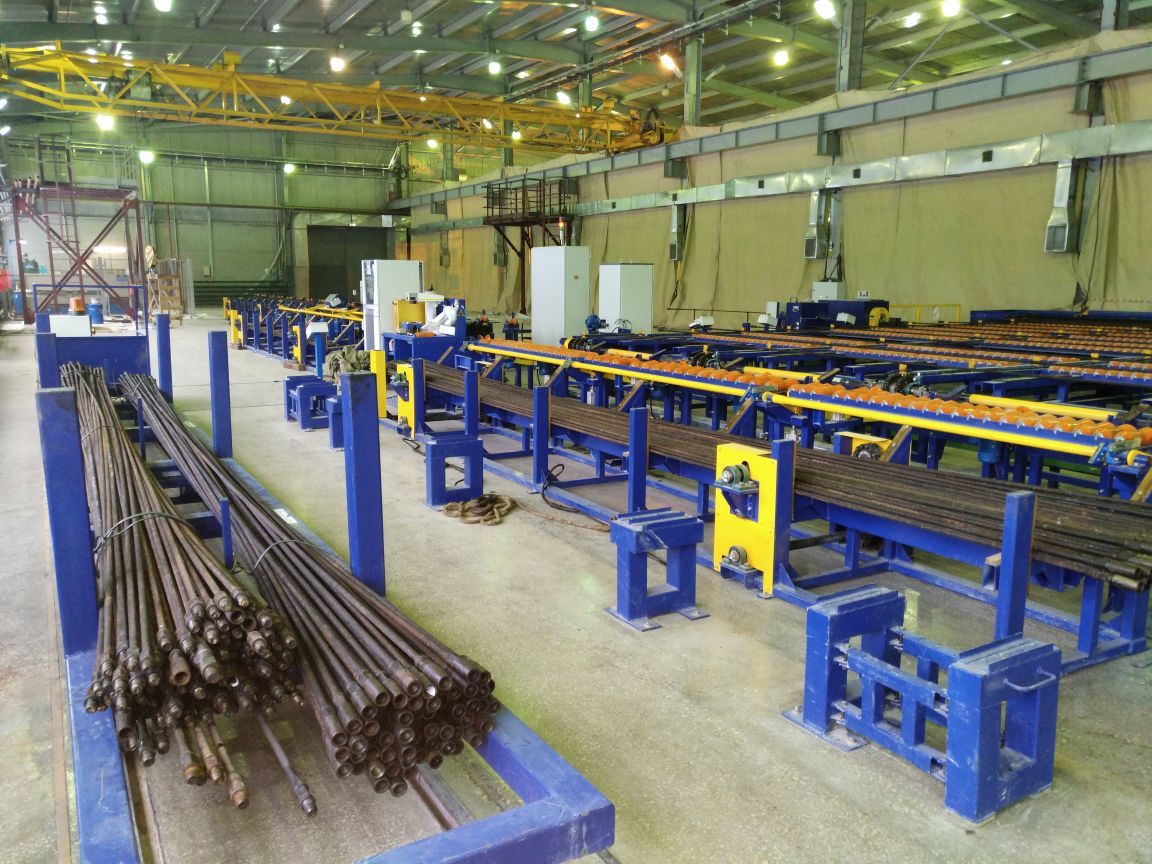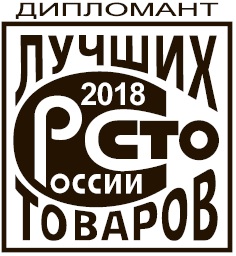Purpose
The process train for diagnostics and repair of sucker rods TMC-SR Line (hereinafter referred to as the train) is designed to perform inspection and repair of onworn sucker rods (hereinafter referred to as SR), as well as incoming inspection of new ones, in order to determine their suitability for further use in the wells. The train is used for cleaning SR from oil buildups, cutoff of centralizers (if necessary), screwing-off of couplings, visual and instrumental inspection, non-destructive inspection of body and end parts, sorting and distribution by length, grades and schedule-sizes, coupling screwing-on, and output control. The site allows performing inspection and repair of onworn SR of schedule-sizes 0.75, 0.87, 0.98 in. and length from 23.62 to 29.99 ft.Additionally, the train allows performing incoming inspection of new schedule-sizes 0.75, 0.87, 0.98 in. and length of 26.25 and 29.99 ft owing to the availability of the necessary and sufficient number of control and measuring equipment.
Field of application
- For oil and service companies that own a stock of sucker rods, both new and onworn, that require comprehensive diagnostics and inspections in the shop conditions to determine the quality of the equipment supplied.
- To assess the reusability of onworn sucker rods, sort them into grades based on the flaw detection results.
- For non-destructive inspection of sucker rods and rod couplings by electromagnetic and eddy current methods, as well as with the use of magnetic particle methods of non-destructive inspection and luminescent suspensions.
- For effective incoming inspection of brand-new rods on the basis of GOST 31825-2012, GOST 13877-96, which upon receipt of rods from various manufacturers can exclude the possibility of entry of brand-new bars with manufacturing defects.
Advantages
- Increased performance of SR diagnostics and repair (more than 1,600 SR/day).
- High quality repair of SR threaded parts due to mechanization of dressing and instrumental inspection processes.
- Possibility of SR flaw detection with scratchalizers.
- High performance efficiency due to the organization of the single-peace flow.
- Process train compactness - 52.49x105 ft.
- Rational arrangement of process equipment and workplace layout according to a 5S System, as well as productivity enhancement and labor efficiency due to application of lean production tools.
- Quick changeover when changing the schedulesize of SR to be machined that takes no more than 30 minutes.
- Additional equipment with the necessary equipment (as agreed with the customer).
- The expertise of the TMC Group Managing Company LLC in design, upgrading and construction of process trains for SR diagnostics and repair for maintenance facilities providing services for the largest Russian oil companies (PJSC Rosneft Oil Company, PJSC Lukoil, PJSC Tatneft, etc.) and their business units, as well as the experience in supplying Trains to PJSC Surgutneftegaz, PJSC Udmurtneft, RN-Remont NPO, TMC Group Managing Company LLC.
Process sequence
The train has a standard set of process equipment allowing to carry out the full-scale diagnostics and repair of SR. List of process operations performed on the train:
- Pre-sorting and rejection of SR determined by the results of visual inspection to be a irrepairable reject. Preparation of suitable SR for feeding to a highpressure washer or an activator-type washer.
- Washing of SR free from oil buildups in a highpressure washer or in an activator-type washer.
- Screwing-off of rod couplings from SR.
- Dressing SR with metal brushes on special-purpose equipment.
- Visual and instrumental inspection of SR: body, threaded and fillet parts, thread calibration.
- Ultrasonic testing of SR end pieces and body and sorting by grades and classes.
- Screwing rod couplings on the shaft.
- Output inspection: marking of SR, installation of protective caps (protectors), forming of bundles and documentation, transportation and warehousing of finished products.
- Follow-on operations and features. Removal of scratchalizers and line-up clamps.
- Follow-on operations and features. Straightening of SR by stretching and/or knurling in rolls.
- Follow-on operations and features. SR fillet part surface layer strengthening.
- Follow-on operations and features. Hardening SR.
- Follow-on operations and features. Welding of scratchalizers and stationary line-up clamps and/or installation of movable line-up clamps.
- Moving SR between operations, finished product warehouse and reject pockets by means of an automated conveyor system. The layout of the tubing repair area is designed in such a way as to minimize the SR travel distance from the loading area to the finished product warehouse. This eliminates counter flows and congestion at the sites, and streamlines the SR movement to the finished product warehouse.
- Other follow-on operations and related equipment are installed according to the specifications if necessary.

